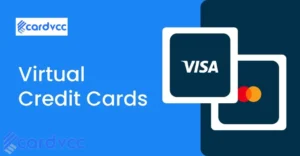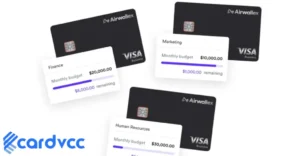Yes, businesses can charge a credit card fee. This is often referred to as a surcharge.

Businesses often face processing fees from credit card companies. They may pass these costs on to customers as a surcharge to offset them. This practice is legal in many places but subject to specific regulations. Transparency is crucial; businesses must disclose these fees to customers before completing a transaction.
Understanding the local laws and credit card company policies is essential to ensure compliance. Implementing credit card fees can help businesses manage expenses, but it might also impact customer satisfaction. Balancing these considerations is key to maintaining a good customer relationship while covering operational costs.
Legal Landscape
Understanding the legal landscape surrounding credit card fees is crucial. Businesses must navigate federal and state laws. This ensures compliance and avoids penalties. Let’s delve into the specifics.
Federal Regulations
The federal government has established guidelines for credit card fees. The Dodd-Frank Wall Street Reform and Consumer Protection Act is key. It allows businesses to charge these fees but with restrictions.
According to the law, businesses must:
- Disclose the fee before the transaction
- Ensure the fee does not exceed the cost of acceptance
- Follow card network rules
Businesses must also inform the card network in advance. This ensures that all charges are transparent. Non-compliance can result in hefty fines.
State-specific Laws
State laws vary significantly regarding credit card fees. Some states prohibit these fees entirely. Others allow them with certain conditions.
| State | Regulation |
|---|---|
| California | Prohibits credit card surcharges |
| Texas | Allows surcharges with clear disclosure |
| Florida | Prohibits surcharges on credit card transactions |
It’s important to stay updated with state-specific laws. Non-compliance can lead to legal issues. Always consult legal advice for state regulations.
Business Perspective
Businesses often consider charging credit card fees to offset transaction costs. This decision impacts various aspects of their operations and customer relationships. Understanding the business perspective is essential for making informed decisions.
Reasons For Charging Fees
There are several reasons why businesses choose to charge credit card fees:
- Cost Recovery: Credit card transactions incur fees that businesses must pay.
- Profit Margins: Small businesses with thin margins need to recover costs.
- Encouraging Cash Payments: Offering a discount for cash payments can save on fees.
Types Of Businesses Affected
Different types of businesses are affected by credit card fees in various ways:
| Business Type | Impact |
|---|---|
| Retail Stores | Variable transaction size, and fee impact vary. |
| Restaurants | Frequent small transactions and cumulative fees add up. |
| Service Providers | Variable transaction size and fee impact vary. |
Understanding the specific impact on different business types helps make strategic decisions about charging fees.
Consumer Reaction
Understanding consumer reaction to credit card fees is crucial for businesses. How customers perceive these charges can impact their purchasing decisions. Let’s delve into how consumers respond.
Acceptance And Resistance
Many consumers accept credit card fees as a part of life. They understand businesses incur costs for processing payments. Still, some customers resist these fees. They view them as unfair or unexpected charges. The reaction often depends on the fee’s transparency. Clear communication can lead to better acceptance.
Businesses should inform customers before charging fees. This practice reduces surprise and builds trust. Transparency fosters acceptance. Customers feel valued when businesses are upfront about costs.
Impact On Purchasing Behavior
Credit card fees can influence purchasing behavior. Some customers may avoid businesses that charge extra. They might seek alternatives with no additional costs. This shift can reduce sales for companies that impose fees.
Others might continue shopping but spend less. They may budget to offset the added cost. This behavior impacts the average transaction value. It’s essential to balance fees and customer retention.
| Customer Reaction | Possible Outcome |
|---|---|
| Acceptance | Continued patronage, trust |
| Resistance | Shift to competitors, reduced spending |
Businesses must consider these reactions. The goal is to maintain a positive customer experience. Here are some tips:
- Communicate fees.
- Offer alternative payment methods.
- Provide value to justify the fee.
Understanding consumer reactions helps businesses make informed decisions. It’s a balance between covering costs and keeping customers happy.
Fee Implementation
Implementing credit card fees can help businesses cover processing costs. This process requires careful calculation and clear communication with customers. Below are some steps to ensure a smooth implementation.
How To Calculate Fees
To start, it’s important to know the different types of credit card fees. These include:
- Transaction fees
- Service fees
- Annual fees
Use a simple formula to calculate the fee:
Fee = (Transaction Amount Fee Percentage) / 100
For example, if the transaction amount is $100 and the fee percentage is 2%, the fee would be $2.
Transparent Communication
Transparency is key to maintaining customer trust. Make sure customers know about the fee before they complete the transaction. Use clear and simple language to explain the fee.
Use the following methods to communicate the fee:
- Signage at the point of sale
- Notifications on your website
- Information on receipts
Provide an example:
| Transaction Amount | Fee Percentage | Total Fee |
|---|---|---|
| $100 | 2% | $2 |
Ensure that the fee is clearly stated and easy to understand.

How Virtual Credit Cards Help in Avoiding Fraudulent Activities
Virtual credit cards are a new way to pay online. They help in avoiding fraudulent activities. This blog post will explain how they work. We will also look at the advantages of virtual payment procedures. Lastly, we will see how Cardvcc can help you create virtual credit cards instantly.
What is a Virtual Credit Card?
A virtual credit card is a digital card. It is not a physical card like the ononen your wallet. You can use it online to make payments. Each virtual card has a unique number, just like a real card.
How Do Virtual Credit Cards Work?
When you want to make an online payment, you create a virtual card. This card will have a unique number, expiration date, and CVV code. You use this information to complete your purchase. The merchant never sees your real card details.
Advantages of Virtual Payment Procedures
There are many advantages to using virtual credit cards. Let’s look at some of them:
- Enhanced Security: Virtual cards help keep your real card information safe.
- One-Time Use: Many virtual cards are for one-time use. This makes them very secure.
- Control Spending: You can set a limit on how much can be spent with each virtual card.
- Easy to Create: Creating a virtual card is quick and easy.
- Tracking: You can easily track your spending with virtual cards.
Enhanced Security
One of the main benefits of virtual credit cards is enhanced security. When you use a virtual card, your real card details are hidden. This makes it much harder for fraudsters to steal your information.
One-Time Use
Many virtual cards are designed for one-time use. Once you use the card, it becomes invalid. This means that even if someone gets the card details, they cannot use it again. This is a great way to avoid fraudulent activities.
Control Spending
With virtual credit cards, you can set spending limits. This means you can control how much money can be spent with each card. This helps in avoiding overspending and keeps your budget in check.
Easy to Create
Creating a virtual credit card is very easy. You can do it in just a few steps. There is no need to wait for a physical card to arrive in the mail. You can start using your virtual card right away.
Tracking
Virtual credit cards make it easy to track your spending. You can see all your transactions in one place. This helps you keep an eye on your expenses and avoid any unauthorized charges.
Join Cardvcc & Instantly Create Virtual Credit Cards
Cardvcc is a platform that helps you create virtual credit cards instantly. It is easy to sign up and start using their services. Here are the steps to join Cardvcc:
- Visit the Cardvcc website at cardvcc.com.
- Sign up for an account.
- Follow the instructions to create your virtual credit card.
- Start using your virtual card for online payments.
Virtual credit cards are a great way to avoid fraudulent activities. They offer enhanced security, one-time use, and control over spending. They are also easy to create and help in tracking your expenses. Cardvcc makes it simple to create virtual credit cards instantly. Visit their website today to get started!
Alternatives To Credit Card Fees
Many businesses wonder if they can charge a credit card fee. There are alternatives to this practice. These options can benefit both the business and the customer.
Incentives For Cash Payments
One effective alternative is offering incentives for cash payments. This encourages customers to use cash instead of credit cards.
- Discounts: Offer a small discount for paying with cash.
- Freebies: Provide a free item or service for cash transactions.
- Loyalty Points: Give extra loyalty points for cash payments.
These incentives can make customers feel valued. They are more likely to return to your business.
Absorbing The Costs
Another option is absorbing the costs of credit card fees. This can increase customer satisfaction.
Here are some ways to manage this:
- Raise Prices Slightly: Adjust prices to cover the fee.
- Budget Planning: Include credit card fees in your budget.
- Negotiate Rates: Talk to your payment processor for better rates.
Absorbing the costs can lead to happier customers. They will appreciate the transparency and fairness.
Case Studies
Many businesses think about charging a credit card fee. Some have done this well, others have faced problems. Let’s look at a few examples.
Successful Implementations
Several businesses have charged a credit card fee with success. They have used clear communication and transparent policies.
One small retail store added a 2% fee for credit card transactions. They clearly stated this at the checkout. Customers were not surprised.
Another case is a popular restaurant. They introduced a 1.5% fee for credit card payments. They informed customers via signs and receipts. Their customers appreciated the honesty.
| Business Type | Fee Percentage | Communication Method |
|---|---|---|
| Retail Store | 2% | Checkout Notice |
| Restaurant | 1.5% | Signs and Receipts |
Challenges Faced
Some businesses found it hard to charge a credit card fee. They faced customer pushback and legal issues.
One online shop tried to add a 3% fee. They did not inform customers well. Many customers complained and left bad reviews.
Another example is a local café. They added a fee without checking local laws. They faced a fine and had to remove the fee.
- Customer Pushback: Poor communication led to complaints.
- Legal Issues: Not checking laws resulted in fines.
Future Trends
The future of charging credit card fees is rapidly evolving. Businesses need to stay updated on trends to remain compliant and meet customer expectations.
Evolving Regulations
Governments are constantly updating rules around credit card fees. Keeping up with these evolving regulations can be challenging. Businesses must monitor changes to avoid penalties.
For example, some states in the U.S. have banned credit card surcharges. Others allow them but with strict guidelines. Below is a table showing a few examples:
| State | Credit Card Fee Policy |
|---|---|
| California | Banned |
| Texas | Allowed with restrictions |
| Florida | Allowed with clear disclosure |
Shifting Consumer Expectations
Consumers today expect transparency in fees. Hidden charges can lead to dissatisfaction. Businesses should communicate any credit card fees upfront.
Additionally, customer preferences are shifting. Many prefer using credit cards for convenience and rewards. Businesses should consider this trend when deciding on fee policies.
Here are some tips to meet shifting consumer expectations:
- Provide clear information about fees at checkout.
- Offer alternative payment methods without fees.
- Ensure customer service is prepared to handle fee-related inquiries.

Frequently Asked Questions
In What States Is It Illegal To Charge Credit Card Fees?
As of now, it is illegal to charge credit card fees in Connecticut, Massachusetts, and Puerto Rico. Some states have restrictions.
Can Companies Charge You A Credit Card Fee?
Yes, companies can charge a credit card fee. Fees vary based on location and type of business.
Can A Business Charge A Credit Card Fee On A Debit Card?
Yes, businesses can charge a fee for debit card transactions, but it depends on state laws and card network rules.
Can My Business Deduct Credit Card Fees?
Yes, your business can deduct credit card fees as a business expense. These fees are tax-deductible.
Conclusion
Businesses can charge a credit card fee, but it’s important to follow legal guidelines. Always inform customers about extra fees. Clear communication helps maintain trust and satisfaction. By being transparent, businesses can cover costs while keeping customer loyalty. Understanding the rules ensures a smoother transaction process for both parties.







